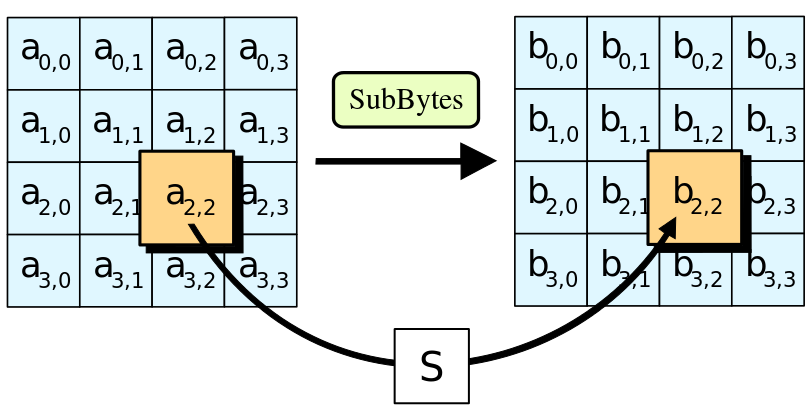RSA is one of the first practical public-key cryptosystems and is widely used for secure data transmission. In such acryptosystem, the encryption key is public and differs from the decryption key which is kept secret. In RSA, this asymmetry is based on the practical difficulty of factoring the product of two large prime numbers, the factoring problem. RSA is made of the initial letters of the surnames of Ron Rivest, Adi Shamir, and Leonard Adleman, who first publicly described the algorithm in 1977. Clifford Cocks, an English mathematician, had developed an equivalent system in 1973, but it was notdeclassified until 1997.
A user of RSA creates and then publishes a public key based on two large prime numbers, along with an auxiliary value. The prime numbers must be kept secret. Anyone can use the public key to encrypt a message, but with currently published methods, if the public key is large enough, only someone with knowledge of the prime numbers can feasibly decode the message. Breaking RSA encryption is known as the RSA problem; whether it is as hard as the factoring problem remains an open question.
public class AsymmetricAlgorithmRSA {
public static final String sTAG = "AsymmetricAlgorithmRSA";
/**
* Generated key pair for 1024-bit RSA encryption and decryption
* @return
*/
public static KeyPair generateKey() {
KeyPair keyPair = null;
try {
KeyPairGenerator kpg = KeyPairGenerator.getInstance("RSA");
kpg.initialize(1024);
keyPair = kpg.genKeyPair();
} catch (Exception e) {
Log.e(sTAG, String.valueOf(R.string.asymmetric_algorithm_rsa_key));
}
return keyPair;
}
/**
* Encoded the original data with RSA private key
* @param privateKey
* @param encryptionText
* @return
*/
public static byte[] encryption(Key privateKey, String encryptionText) {
byte[] encodedBytes = null;
try {
Cipher c = Cipher.getInstance("RSA");
c.init(Cipher.ENCRYPT_MODE, privateKey);
encodedBytes = c.doFinal(encryptionText.getBytes());
} catch (Exception e) {
Log.e(sTAG, String.valueOf(R.string.asymmetric_algorithm_rsa_enryption_error));
}
return encodedBytes;
}
/**
* Decoded the encoded data with RSA public key
* @param publicKey
* @param encodedBytes
* @return
*/
public static byte[] decryption(Key publicKey, byte[] encodedBytes) {
byte[] decodedBytes = null;
try {
Cipher c = Cipher.getInstance("RSA");
c.init(Cipher.DECRYPT_MODE, publicKey);
decodedBytes = c.doFinal(encodedBytes);
} catch (Exception e) {
Log.e(sTAG, String.valueOf(R.string.asymmetric_algorithm_rsa_deryption_error));
}
return decodedBytes;
}
}
And now in our activity:
import android.os.Bundle;
import android.support.v7.app.AppCompatActivity;
import android.support.v7.widget.Toolbar;
import android.util.Base64;
import android.view.View;
import android.widget.Button;
import android.widget.EditText;
import android.widget.TextView;
import com.thedeveloperworldisyous.encryptionfile.utils.AsymmetricAlgorithmRSA;
import com.thedeveloperworldisyous.encryptionfile.utils.Utils;
import java.security.Key;
import java.security.KeyPair;
public class RSAActivity extends AppCompatActivity {
public TextView mInPutTextView, mEncodedTextView, mDecoded;
public EditText mEditText;
@Override
protected void onCreate(Bundle savedInstanceState) {
super.onCreate(savedInstanceState);
setContentView(R.layout.activity_rsa);
Toolbar toolbar = (Toolbar) findViewById(R.id.toolbar);
setSupportActionBar(toolbar);
mEditText = (EditText) findViewById(R.id.activity_rsa_edit_text);
mInPutTextView = (TextView)findViewById(R.id.activity_rsa_text_view);
mEncodedTextView = (TextView)findViewById(R.id.activity_rsa_encode_text_view);
mDecoded = (TextView)findViewById(R.id.activity_rsa_decode_text_view);
setSupportActionBar(toolbar);
}
public void encodeAndDecodeRSA(View view) {
Utils.hideKeyboard(this);
String stringText = mEditText.getText().toString();
mEditText.setText("");
mInPutTextView.setText(stringText);
KeyPair keyPair = AsymmetricAlgorithmRSA.generateKey();
Key publicKey = keyPair.getPublic();
Key privateKey = keyPair.getPrivate();
byte[] encodedBytes = AsymmetricAlgorithmRSA.encryption(privateKey, stringText);
mEncodedTextView.setText(Base64.encodeToString(encodedBytes, Base64.DEFAULT));
byte[] decodedBytes = AsymmetricAlgorithmRSA.decryption(publicKey, encodedBytes);
mDecoded.setText(new String(decodedBytes));
}
}

